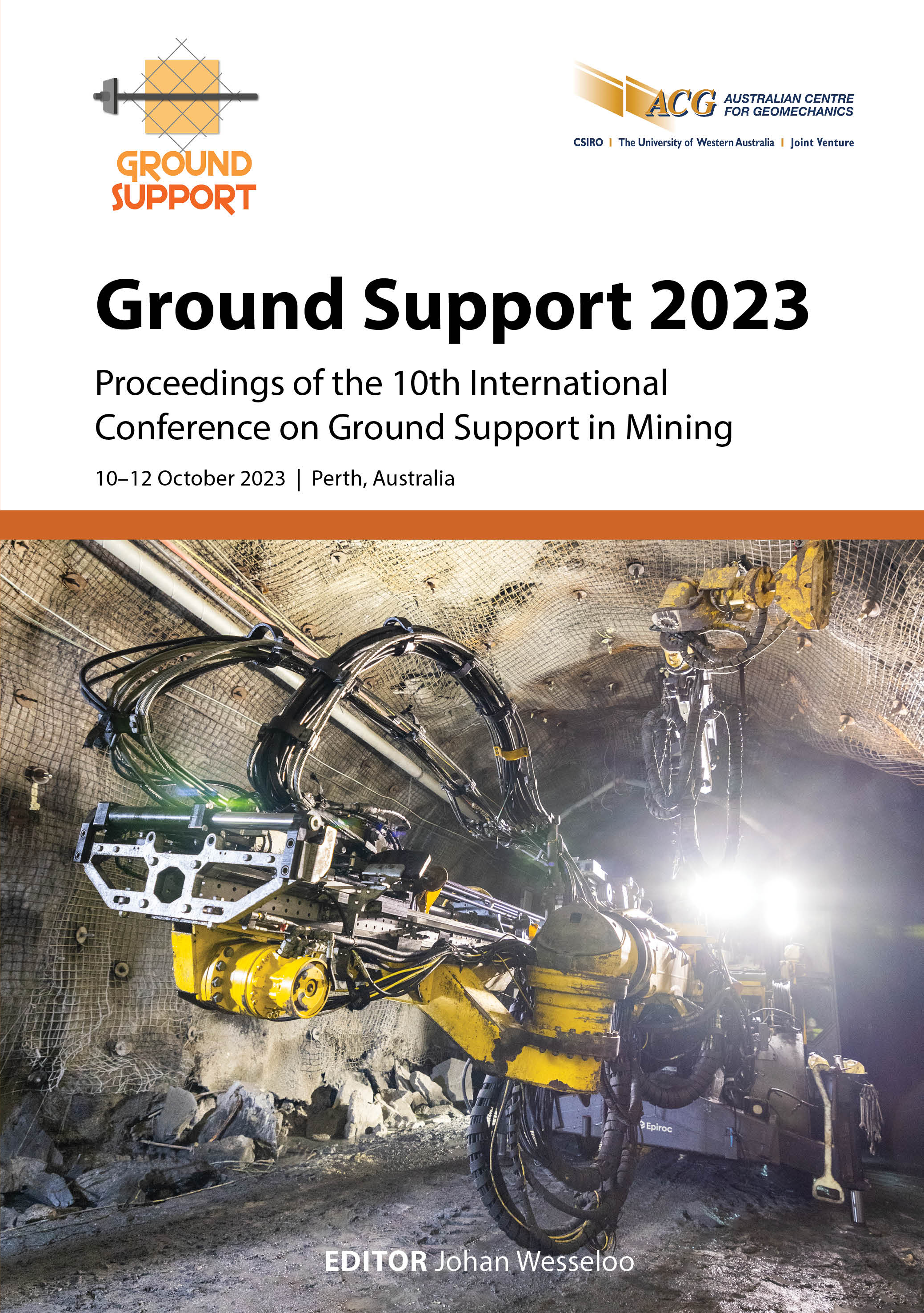A numerical approach for a displacement-based ground support capacity consumption forecast

|
Authors: Dehkhoda, S; Reusch, F; Putzar, G |
DOI https://doi.org/10.36487/ACG_repo/2325_39
Cite As:
Dehkhoda, S, Reusch, F & Putzar, G 2023, 'A numerical approach for a displacement-based ground support capacity consumption forecast', in J Wesseloo (ed.), Ground Support 2023: Proceedings of the 10th International Conference on Ground Support in Mining, Australian Centre for Geomechanics, Perth, pp. 573-590, https://doi.org/10.36487/ACG_repo/2325_39
Abstract:
The evolution and timing of discontinuous rock mass deformation is critical in evaluation of capacity consumption in individual support elements and overall performance of the support system. Ground support and reinforcement are installed in a strain free, or at a specified load condition (i.e. prestressed), into a deformed, discontinuous rock mass. The subsequent additional loads that develop in the support system are caused by additional displacements within the rock mass and the resultant forces generated by (i) blocks and wedges that would otherwise be kinematically free to fall or slide, and (ii) deformation of the continuum rock material between the discontinuities. Hence, the interaction between the support elements and the rock mass is complex and non-linear beyond the point of yield. This paper reports on a numerical modelling technique that forecasts and assesses performance of ground support systems over the life of underground mining excavations. Simulating a support system in a discontinuous rock mass subjected to mining-induced stress and strain path, the authors have developed a methodology that tracks the consumed and the remaining capacity of the individual support elements within the system as loading demand increases. By providing a quantitative tool to assess performance of the support system over the life of mine, the outcome assists the mines to set guides to when and where preventative measures will be required. The results combined with closure forecast data also allow identifying high-risk areas and deformation trigger levels beyond which entry into an excavation with a particular support design would need to be reviewed. The modelling technique, set up and results are discussed in full within the paper.
Keywords: numerical modelling, ground support performance, capacity consumption
References:
Hoek, E & Brown, ET 2019, ‘The Hoek–Brown failure criterion and GSI – 2018 edition’, Journal of Rock Mechanics and Geotechnical Engineering, vol. 11, no. 3, pp. 445–463.
Kaiser, PK & Moss, A 2022, ‘Deformation-based support design for highly stressed ground with a focus on rock burst damage mitigation’, Journal of Rock Mechanics and Geotechnical Engineering, vol.14, no. 1, pp. 50–66.
Levkovitch, V, Reusch, F & Beck, D 2010, ‘Application of a non-linear confinement sensitive constitutive model to mine scale simulations subject to varying levels of confining stress’, in J Zhao, V Laboure, J-P Dudt & J-F Mather (eds), Rock Mechanics in Civil and Environmental Engineering, CRC Press, Boca Raton.
Lowther, R, De Ross, J, Orrego, C & Cuello, D 2022, ‘A probabilistic evaluation of the displacement-based ground support design approach’, in Y Potvin (ed.), Caving 2022: Fifth International Conference on Block and Sublevel Caving, Australian Centre for Geomechanics, Perth, pp. 241–254,
Munjiza, A 2004, The Combined Finite‐Discrete Element Method, John Wiley & Sons, Hoboken.
© Copyright 2026, Australian Centre for Geomechanics (ACG), The University of Western Australia. All rights reserved.
View copyright/legal information
Please direct any queries or error reports to repository-acg@uwa.edu.au
View copyright/legal information
Please direct any queries or error reports to repository-acg@uwa.edu.au
